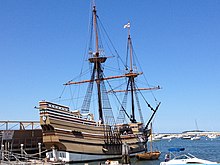Yet when I sat down to write, I had only bare-bones facts from the US Census, Civil War pension records, and similar sources.
To engage my readers (younger relatives of today and descendants in future generations), I needed to flesh out these skeletons beyond just names and dates. My goal was to provide a more three-dimensional view of each ancestor's life.
This first part of my new blog series examines how an ancestor's family situation can add an important dimension to understand his or her life. Later posts in this series will look at community, society, and history as context for understanding ancestors.
Ancestors in Context: Family Situation
Here are some of the elements of family situation I examined to understand the life of Benjamin Franklin Steiner, born in 1840 in Crawford County, Ohio. He was my husband's second great uncle, and he served for nearly three years in the 10th Ohio Cavalry, fighting for the Union side.
- Birth order - He was the seventh of nine children, and the fifth of six sons. But since his father was a tailor, not a farmer, having a lot of boys didn't necessarily help the household prosper. It probably meant mouths to feed. Perhaps this is why I found Benjamin not at home in the 1860 US Census but living 40 miles away with a carpenter's family, and working as a laborer at the age of 20. Then I looked further.
- Parents - Benjamin's mother was listed as head of household in the 1860 US Census, no occupation. Benjamin's father died before the Census. Still at home with his Mom were a 25-year-old son who was a carpenter; a 21-year-old daughter whose occupation was "sewing;" and three children under the age of 15. I think this explains why Benjamin wasn't living at home--he needed to board elsewhere and make money while one of his brothers remained at home to be the chief breadwinner for the family.
- Siblings - One brother was a carpenter, one a plasterer, one a grocer, one a butcher, and one a farmer. After serving in the Civil War, Benjamin first started farming. With his second family, he tried brick and tile making before returning to farming. Both of these occupations he would have seen first-hand. Interestingly, none of the children chose to be a tailor like their father.
- Spouse and children - In 1861, Benjamin married a farmer's daughter. He was 21, she was 23. They had one son before Benjamin went to war in October, 1862. It must have been difficult for his wife and child, on their own, financially and emotionally, while Benjamin was in the military. When he returned, he and his wife had two more children. Only months after the third child was born, Benjamin's wife died. He remarried three years later, to a widow bringing up three children on her own. Now Benjamin was supporting a wife, two children, and three stepchildren, which may be why he changed occupations to try brick and tile making. Once the children were all grown and gone, he went back to farming in his later years.
More about context in Part 2.







































